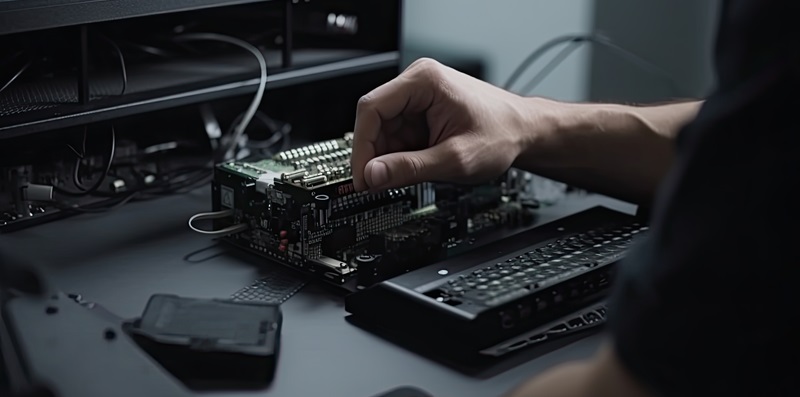In the world of Small Form Factor (SFF) systems, effective cooling is essential for maintaining optimal performance and preventing overheating. Top-down cooling, where the CPU cooler blows air directly onto the motherboard, has become a popular choice due to its efficient cooling capabilities and compatibility with compact cases. One standout contender in the realm of top-down coolers is the Thermalright SI-100. This article explores the performance, noise level, compatibility, and overall suitability of the SI-100 as the king of top-down cooling for SFF systems.
Performance Testing and Results
During rigorous testing, the Thermalright SI-100 demonstrated its prowess by cooling an impressive 113W, surpassing its nearest competitor by allowing the CPU to handle an additional 9W. This remarkable cooling capacity sets the SI-100 apart from the competition, solidifying its status as a top performer in the market. However, it is worth noting that this high performance comes at a cost. With noise measured at 44.9 dBA, the SI-100 proved to be the loudest top-down cooler tested thus far.
The SI-100 not only excelled in terms of cooling capacity but also outperformed its nearest rivals from Scythe, DeepCool, Noctua, and BeQuiet by a significant margin. It surpassed their solutions by 8°C, demonstrating its superior cooling efficiency. When compared to Noctua and BeQuiet, the SI-100’s performance was even more impressive, with an 11°C advantage. In fact, the SI-100 managed to outperform its competitors from Scythe and Noctua by a notable 6°C when measured at a comfortable 43°C over a 23°C ambient temperature.
Noise Level Assessment
While the SI-100’s performance is remarkable, it is crucial to consider noise levels, especially in compact SFF systems where silence is often a priority. When tested under the default fan curve of the motherboard, the SI-100 registered at 42.9 dBA. While not the quietest option, the noise level can be easily managed and mitigated. Even when tuned for low noise levels, the SI-100 outperforms all of its competitors, making it an attractive choice for those seeking a balance between performance and noise reduction.
Compatibility and Design Considerations
One factor that potential buyers need to consider is the height of the SI-100. While this cooler is taller than most of its competitors, it is important to note that compatibility issues may arise in the slimmest of cases. However, for most SFF systems, the SI-100’s height will not pose any significant challenges, making it a suitable option for the majority of compact builds.
Final Verdict and Recommendation
After thorough evaluation, it is clear that the Thermalright SI-100 is the king of top-down cooling in the world of SFF systems. Its exceptional cooling capability, outperforming competitors in both cooling efficiency and endurance, truly sets it apart. Despite being louder when compared to other top-down coolers, the noise level can be effectively managed without sacrificing performance. The SI-100’s compatibility, although slightly taller than some competitors, makes it a highly suitable choice for SFF cases.
In conclusion, the Thermalright SI-100 is a standout performer in the realm of top-down cooling for SFF systems. Its ability to cool 113W, outperforming its nearest competitors by a significant margin, proves its superiority. Despite being somewhat louder than other options, the SI-100’s noise level can be controlled, and when tuned for low noise, it still outperforms all competitors. With its impressive cooling capabilities and compatibility with most SFF cases, the SI-100 is undoubtedly the top choice for those seeking optimal cooling in their compact builds.

